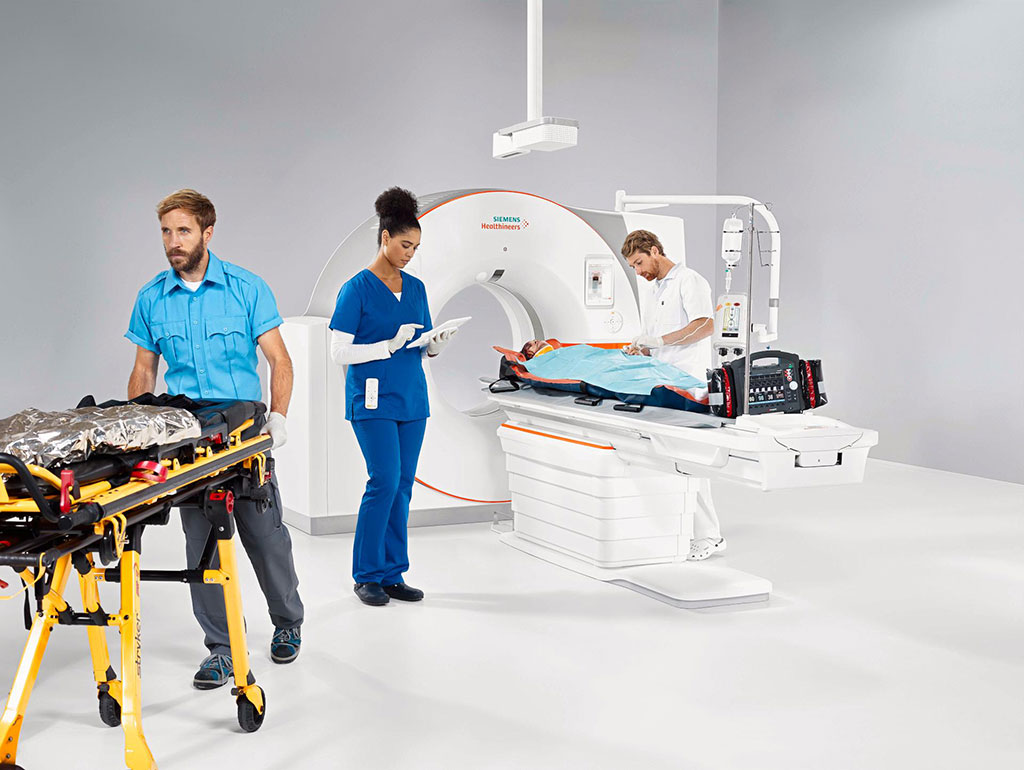New CT Speeds Diagnosis in Challenging Clinical Procedures
By MedImaging International staff writers
Posted on 21 Sep 2021
A high-speed, high-resolution computerized tomography (CT) scanner with an intelligent operation approach simplifies procedures for medical staff and patients.Posted on 21 Sep 2021
The Siemens Healthineers (Erlangen, Germany) Somatom X.ceed is a large bore (82 centimeters) CT scanner engineered specifically for the most challenging clinical areas, such as cardiac and interventional use, where time and precision are of essence, but can equally well perform all-around imaging. Features include a powerful 120 kW x-ray tube, a rapid gantry rotation time of 0.25 seconds, 262 mm/second scan speed, a 0.4x0.5 focal point, 1,300 mA power reserves, and intuitive user control through a tablet running on the iPad platform. X.ceed also supports dual-energy spectral imaging, with a spectral field of view to 50 cm.

The Somatom X.ceed CT scanner provides emergency applications (Photo courtesy of Siemens Healthineers)
To support workflows during critical situations, two automated guidance apps have been integrated into the system; the myExam Companion, which guides users through diagnostic procedures, and the myNeedle Companion, which helps planning and guidance of percutaneous needle procedures, with the help of myNeedle Laser, which projects the needle entry point and insertion angle directly on the body of the patient, even in advanced double-angulated procedures with multiple needle paths. Another app, myExam Satellite, enables immediate assessment of CT perfusion results.
“As the number and complexity of radiological procedures increase, demands on staff are reaching heightened levels,” said Philipp Fischer, head of CT at Siemens Healthineers. “This continues to cause unwarranted variation, in both diagnostic and interventional procedures. Somatom X.ceed, together with myNeedle Companion, is a true game changer for CT-guided interventions. After introduction of myExam Companion last year, reducing the overall complexity of scanner operation in as many aspects as possible was our next logical step.”
In the past 20 years, the demand for CT-imaging in emergency departments has increased by over 250%. In such a busy emergency environment, inefficient workflow can slow down radiologists who need to triage patients and perform multiple, demanding tasks quickly. Applications powered by artificial intelligence (AI) can provide ready to read results aimed at facilitating both diagnostic and interventional tasks.














